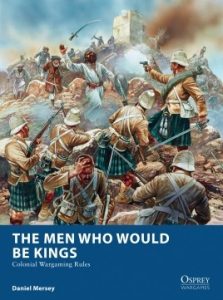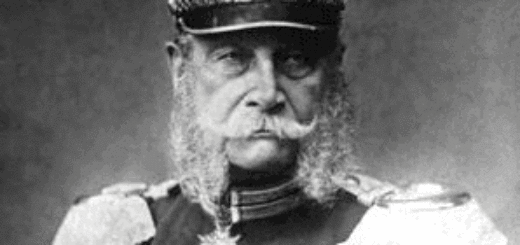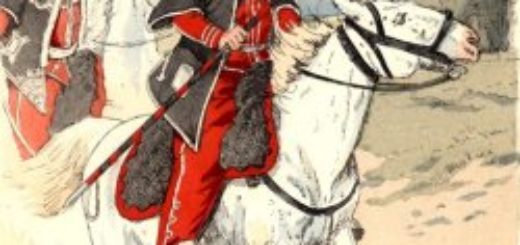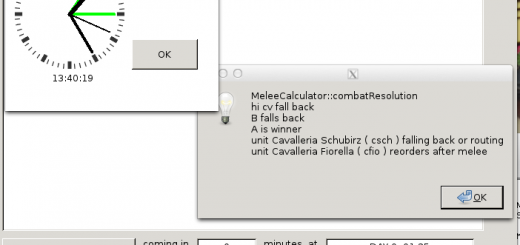The Men Who Would Be Kings

Ruleset from Osprey
EXTRA Rules
One leader and one leader only
Select which unit has your C-in-C. That unit needs a Leader model, the other units just have ordinary soldiers.
Roll for your Leader’s trait and leadership value as usual.
The Leader’s own unit uses his leadership value and is affected by his trait. All other units use his leadership value, but are unaffected by his trait.
If your Leader is killed, all units count as leaderless.
You may choose to consider including a rule that says units count as Leaderless is beyond a certain range from the Leader’s unit (or more specifically, from his model). This could depend on how open the table’s terrain is. Something for you to ponder!
Theoretical strength
You may wish to implement this rule if you want to field a large Tribal Field Force but don’t (yet) have enough models¦ or if you are looking for a slightly different tactical challenge.
You can command a Field Force at Theoretical Strength as follows:
You must command an all-Tribal Field Force.
Work out the units you wish to include up to your agreed points value (24 points in the usual game). Ignore how many units you actually own.
Deploy as much of your Field Force as you have models for at the start of the scenario; deploy complete units only. The rest of your Field Force at paper strength lies in wait off table for the present moment.
When one of your on-table units has been destroyed or retreats off the table, recycle it at the start of the next turn from your paper strength resources.
Naturally, an Infantry unit may only replace an Infantry unit, and a Cavalry unit may only replace a Cavalry unit.
To make up for lost time or if you prefer due to your amazing off-table generalship during your next turn you may deploy the new unit along any table edge. It may not take any further action during this turn, and may not deploy with less than one of its Movement distances from any enemy units.
Remember to keep track of how many of your paper strength units you have deployed. We wouldn’t want you sneaking an extra impi onto the table, would we?
With flags flying and bugles blowing
If you choose to include flags and musicians of any kind in your units, you may utilize their morale effect on the tabletop:
A unit may replace one ordinary model with a flagbearer or musician model (+1 point).
A unit may contain both a flagbearer and a musician, but may only benefit from one model per turn (this only becomes useful is useful if the first model is killed).
When present in a unit, this model allows one failed Rally test to be rerolled, once per turn.
If the model is killed, the unit suffers a permanent -1 modifier to its Discipline.
A flagbearer/musician is killed in the same way as a Leader (both types being special models): if both types are present in a unit, special casualties occur on a roll or 3 or less (4 or less if both musician and flagbearer are present); roll one die to determine whether the Leader or musician/flag is killed (odds = Leader; evens = flagbearer/musician). Reduce the chances of another special casualty to 2 or 3 (for one or two models remaining, respectively) when a special model is killed.
Using other exciting models from your collection
In the core rules, there are only two roles for models: Leaders and cannon fodder. If you are playing a fairly small skirmish, you may wish to introduce special characters depending on the models you have in your collection, building on the Flags & Musicians optional rules in the book:
Sergeants:
If Leaderless, functions on a 7+ not an 8+. Adds 1 point to a unit’s cost and replaces an ordinary model. Is not tested as a special casualty as anyone who has seen Zulu knows that Sergeants are too tough to put down!
Reporters, witchdoctors, and holy men:
Add as an extra model in the unit. For every enemy unit removed from play by this unit while this character is present, the player gains +1 victory point. If this special character is killed or the unit is removed from play, the player suffers -4 victory points. Does not count as a model in the unit for combat or morale purposes. Adds 2 points to a unit’s cost, and a player may only field one such model in a Field Force.
Escorted archaeologist/lady/governor/pet chimp:
Add as an extra model to the unit. More vulnerable in melee than soldiers: killed on a roll of 3-5 when testing for Leader casualties from melee (Leader is still a casualty on a roll of 2). If this special character is killed or the unit is removed from play, your opponent gains 1 victory point; if the character survives, you gain 1 victory point. Does not count as a model in the unit for combat or morale purposes. No additional cost, and a player may only field one such model in a Field Force.
If any of these special characters are included in your unit, they stand a chance of being killed in the same way as a Leader/musician in the core rules. A special character is attached to a unit in the same way as a Leader.
Artillery limbers
For some Field Forces, it may be appropriate to allow their guns to be limbered up and moved more efficiently by horsepower. If you wish to do so:
- Allow the crewed weapon to move as Regular Cavalry
- Introduce two new commands: limber up/unlimber
- Before moving as cavalry, the unit must pass an action test to limber up
- After moving as cavalry it must pass an action test to unlimber, ready to fire
- Increase the cost of the unit by 1
- You should ideally have a horse team available to place in front of the gun when limbered up.
Rockets
It is perfectly acceptable to use the field gun rules if your Field Force wishes to use a rocket. However, during the rules development, I experimented with a more fanciful way of representing rockets, based on the accounts I have read of their variable performance in action.
Rockets act exactly as other Crewed Weapons, but may only fire at targets at long range, and instead of causing casualties they cause the target unit to take Pinned tests:
Choose a target unit at long Field Gun range: this unit must take one Pinned test for each crew model with the rocket.
The rocket may not target a unit at short Field Gun range.
I claim no historical accuracy here, just a different type of toy to play with on the tabletop.
MODS
Russian Civil War
rules adaptations of TMWWBKs for the RCW¦
In case I forget to mention it later, if anyone would like any of the cards or markers that I discuss below, just PM me and I will send them through.
I use unit markers to denote different levels of unit, from top level (Officer Cadets or Cheka), through Regulars, to Conscripts. Attached is a picture of a unit marker for an Officer Cadet unit. I also use markers to denote unit leaders, I give them each a name as this helps with the characterisation, and I put their leadership value onto the marker. I found that doing it this way means that the game can start without fuss as all the pre prep has already occurred.
The next thing that I have produced is a set of unit cards, with one card for each level/type of troop. I will post pics below. In essence, I like to place all the key information for each unit type onto their respective cards. I do not use the volley fire rules, and all units are based on the Regular Infantry category from the rules.
For each level of unit I give a particular free move:
- top level units I give Skirmish (what I call Fire & Movement on the cards) as I like to think this reflects their canniness (and their high leadership means that they rarely fail a move or fire test anyway).
- Mid level units (Regulars) have the free fire, while
- Conscripts only have Move as their free action.
For artillery and HMGs,
I limit their ammunition in order to not have them dominate the battle too much and turn it into a WW1 type game. For this game I allocated between 3-8 rounds of fire per heavy weapon. Of course the enemy do not know when a heavy weapon has run out of ammo or it it is just trying to lure them on¦
I use a pack of playing cards to decide the order that units take actions.
At the start of a turn, each player receives the same number of cards as he has units, and then players get called to lay their first card. The highest card goes first, and so on down through the cards, until all players have laid. This allows for quite some tactical nuances, with players able to lay low cards early (for example), in order to gain the initiative elsewhere later. Once all cards have been laid that is the end of the turn. This system also adds some nice tension when units are racing for objectives, or trying to make it into cover, etc.
Whilst I have not used it yet, I would suggest that a way to reflect high morale but poor training would be to give a + bonus (+2 perhaps?) only for Morale type tests with other tests being taken on a different rating.
Rather than every unit having a leader, you may decide just to field a commander-in-chief (possibly holding a lofty rank such as Lieutenant or Captain!). If so…
Leaders variant
Level Points cost Discipline Modifier Command distance
LT 1 +1 8″
Captain 2 +2 12″
Major 4 Roll 1D6 18″
1-4: +2
5-6: +3
How about allow senior leaders who are not attached to a unit (which would roll on that senior leader’s rating) the ability once per turn to enable a unit that failed an activation to re-roll.
Or you could define senior leader quality (or another way of thinking about it the effectiveness of the command and control system) against the number of times you could re-roll a failed activation in a turn (limited though to once per unit). A superior leader might be allowed 2 re-rolls.
Another idea would be to allow a senior leader at the beginning of the game to issue a “standing order” that changes the force’s free action to reflect commander’s intent. I would see this as only applying to regular forces. I have thought about this in terms of using the rules for 1914 where I would want to reflect the German’s bit better command and control.
Boxers
I decided to take a whack at troop types for the Boxer Rebellion Chinese. It’s mostly based on my gut reactions and repeated viewings of 55 Days at Peking rather than any specific, serious research.
- Boxers: Tribal Infantry @ 3 pts.
- Boxer shooters: Irregular Infantry, Poor Shots @ 3 pts.
- Tigermen: Tribal Infantry, Fierce and Elite @ 6 pts. or Fierce and Veteran @ 5 pts.
- Imperial Regulars: Irregular Infantry, Well-Armed @ 5 pts.
- Jingal Teams: Poor Crewed Weapon (ranged as Machinegun, but only 2 dice/crewman) @ 4 pts.
And here’s a sample 24-point Field Force:
1 x Tigermen: Tribal Infantry, Fierce and Veteran @ 5 pts.
3 x Boxers: Tribal Infantry @ 9 pts.
2 x Boxer shooters: Irregular Infantry, Poor Shots @ 6 pts.
1 x Jingal Team: Poor Crewed Weapon @ 4 pts.
For the Legation and Western forces, field troops would obviously be regulars, but I’d make the Carving Knife Brigade: Irregular Infantry, Veteran and Well-Armed @ 6 pts. or just Irregular Infantry, Well-Armed @ 5 pts.
We’ve actually used these stats for numerous games in my local gaming group and they seem to feel about right. Tigermen kick butt; however, the Jingals seem to be rather useless, I really only included them because I have some lovely Jingal teams painted up! We pretty much decided that a poorly-crewed artillery piece would be more useful, especially in scenarios like C: To the Last Bullet where the Western forces are a long way off and inside a building.
Afghanistan
1. No cavalry. In the hills, the tribes didn’t use them. On the Afghan plains, absolutely, but our games are all set in the 1897 Pathan rebellion, so no cavalry.
2. Most Pathan riflemen (Irregular Foot) are downgraded to ‘poor shots’ (hit on a 6) to represent the lower rate of fire of tribal warriors compared to Anglo-Indian troops. To represent their uncanny sniping ability, we make them some of them ‘Snipers’ where the enemy leader is killed on any double, not just double 1! We also have at least one unit that isn’t downgraded. We field a mix of ‘obsolete rifle’ and ‘musket’ warriors in our forces to represent the mix of weaponry. (All our Anglo Indians get ‘modern rifle’ and British units get ‘sharpshooter’ to represent the greater rate of fire of the Lee Metford magazine rifle).
3. We field all our Irregular Foot as having ‘Born to the Hills’ meaning that they can run about over rough terrain as they like AND we give them ‘Fieldcraft’ so they can go to ground.
4. We field some units of Tribal Foot as swordsmen, which even in 1897 is right. All swordsmen gain the Fanatics rule, so have no short range shooting (most Pathan swordsmen had no short range missile weapon) but become Fierce so hit on 4+ in melee. At least one unit per 24pt force is upgraded to be Ghazi fanatics.They gain ‘Veteran’ and have ‘move’ and ‘attack’ as free actions. This makes them very interesting to play with!
5. No artillery. Most Pathan tribes didn’t use any. Again, on the Afghan plains in earlier wars, this may differ.
Our typical convention Pathan force is:
1 x Sharpshooters (obs. rifle, snipers)
3 x Riflemen (obs. rifle downgraded shooting)
1 x Jezzails (musket downgraded shooting)
2 x Swordsmen
2 x Ghazi Fanatics
We can always upgrade more units to ‘snipers’ if the situation warrants it.
The Anglo-Indian force opposing it:
1 x British infantry (‘sharpshooter’)
1 x Sikh infantry (Fierce)
1 x Guides infantry
1 x Gurkha infantry
1 x Maxim gun
1 x mountain artillery (we usually give the unit ‘the gentleman has a bottle’ trait to reduce its effectiveness, especially if the Maxim is also being fielded)
1 x Bengal Lancers
We find that all of these tweaks give us a very ‘theatre-specific’ feel to the games and everyone who has played our convention games or club-night games has loved them. We play multi-player with 50+ points per side usually too (although we don’t really count points, to be honest. We just try to play well-designed scenarios of our own making! We’re on about 50-50 victories too, suggesting balance in the scenarios!
East Africa home rules
Vehicles.
Go up, or down, the gears. 1st gear (starting) = 1x D6 inches. 2nd gear = 2x D6 etc.
A one when attempting to start = fail. The inches achieved when moving = maximum, you can do less if you want (throw 14″ does not mean you have to do that, but could do say 8″)
If you get more 1s than other scores = failure (umpire/ other players decide) e.g. tire blow out, stalled, out of petrol etc. (if you want you could draw up a chart & dice on it)
Mortars.
We gave them two ranges (as per TMwwbK) N.B. they must have a minimum distance.
We had 12″ to 24″ & long range 24″ to 36″. If owner managed to fire (our Empress Miniatures ‘Oliver & Hardy’ mortar kept failing, “That’s another fine mess you’ve gotten me into”) he chose an ‘aim point’ then threw artillery deviation dice (games workshop) the deviation was in CMs if at short range, inches if long ranges. If still within 2″ of (any) target = hits. If within 6″ of (any) target = hits, but counts as another level of cover (as per TMwwbK)
Animals.
Each of the five players were given two ‘hazard’ cards. They could play them at any time they thought appropriate. This activated an animal threat. The elephants were the most effective of the British troops! JC, the left wing German commander decided not to fire at them due to a believe that several tons of beasts ‘wandering around’ were less of a threat than a stampeding herd. Any beasts activated were controlled by artillery deviation dice until they left the area. The elephants did (eventually) wander off table & the lions disappeared further into the jungle.
It is planned to do a series of event cards to cover what the animals do, such as ‘Any unit crossing a stream has attracted crocodiles’ or ‘Anyone in a boat has awoken hippos’ with covering rules on the cards.



